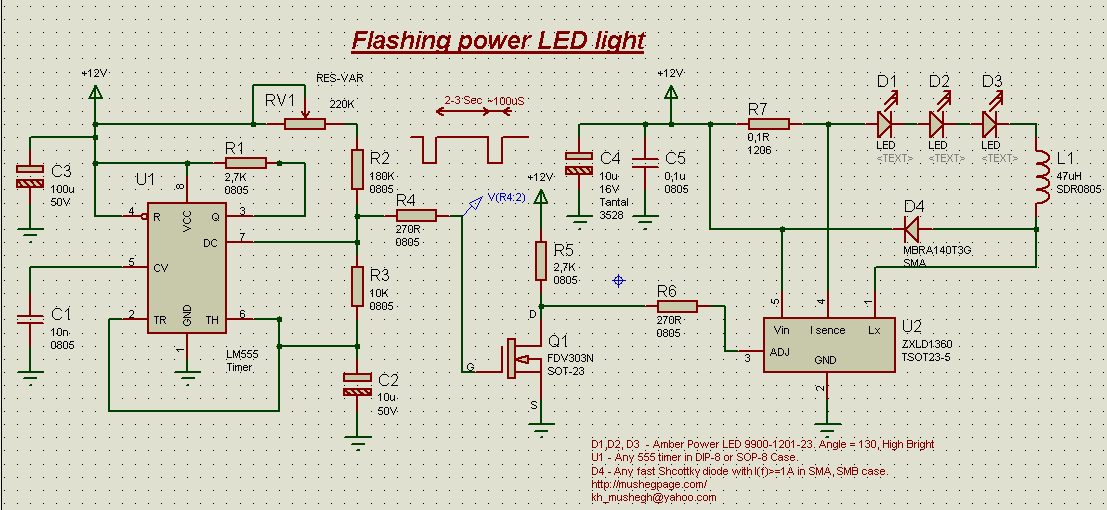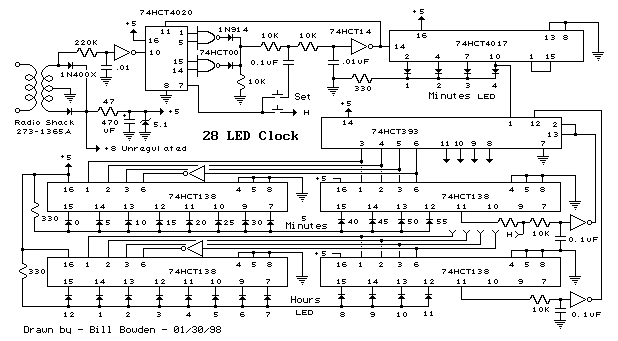
555 Timer Clap Switch

This 555 timer clap switch circuit electronic project is designed using common electronic components.
The 555 timer clap switch circuit utilizes a 555 timer IC in a monostable configuration to create a sound-activated switch. The circuit is triggered by a sound, such as a clap, which is detected by a microphone. The microphone converts the sound wave into an electrical signal, which is then amplified and fed into the trigger input of the 555 timer.
Key components of the circuit include a microphone, a preamplifier stage, the 555 timer IC, resistors, capacitors, and a relay. The microphone is typically an electret type, which requires a biasing resistor for proper operation. The amplified signal from the microphone is conditioned using a capacitor to filter out noise and ensure that only significant sound events trigger the timer.
In the monostable mode, the 555 timer produces a single output pulse when triggered. The duration of this pulse is determined by the values of the resistor and capacitor connected to the timer. When the clap sound is detected, the timer activates the relay, which can be used to control a larger load, such as a lamp or other electrical device.
The circuit can be powered by a standard DC power supply, and the output can be adjusted for sensitivity to different sound levels. Additional features may include an LED indicator to show when the circuit is active or a potentiometer to fine-tune the sensitivity of the microphone. Overall, the 555 timer clap switch circuit is a practical application of the 555 timer IC, demonstrating its versatility in sound-activated control systems.This 555 timer clap switch circuit electronic project is designed using some common electronic parts. This 555 timer clap switch circuit electronic projec.. 🔗 External reference
The 555 timer clap switch circuit utilizes a 555 timer IC in a monostable configuration to create a sound-activated switch. The circuit is triggered by a sound, such as a clap, which is detected by a microphone. The microphone converts the sound wave into an electrical signal, which is then amplified and fed into the trigger input of the 555 timer.
Key components of the circuit include a microphone, a preamplifier stage, the 555 timer IC, resistors, capacitors, and a relay. The microphone is typically an electret type, which requires a biasing resistor for proper operation. The amplified signal from the microphone is conditioned using a capacitor to filter out noise and ensure that only significant sound events trigger the timer.
In the monostable mode, the 555 timer produces a single output pulse when triggered. The duration of this pulse is determined by the values of the resistor and capacitor connected to the timer. When the clap sound is detected, the timer activates the relay, which can be used to control a larger load, such as a lamp or other electrical device.
The circuit can be powered by a standard DC power supply, and the output can be adjusted for sensitivity to different sound levels. Additional features may include an LED indicator to show when the circuit is active or a potentiometer to fine-tune the sensitivity of the microphone. Overall, the 555 timer clap switch circuit is a practical application of the 555 timer IC, demonstrating its versatility in sound-activated control systems.This 555 timer clap switch circuit electronic project is designed using some common electronic parts. This 555 timer clap switch circuit electronic projec.. 🔗 External reference





